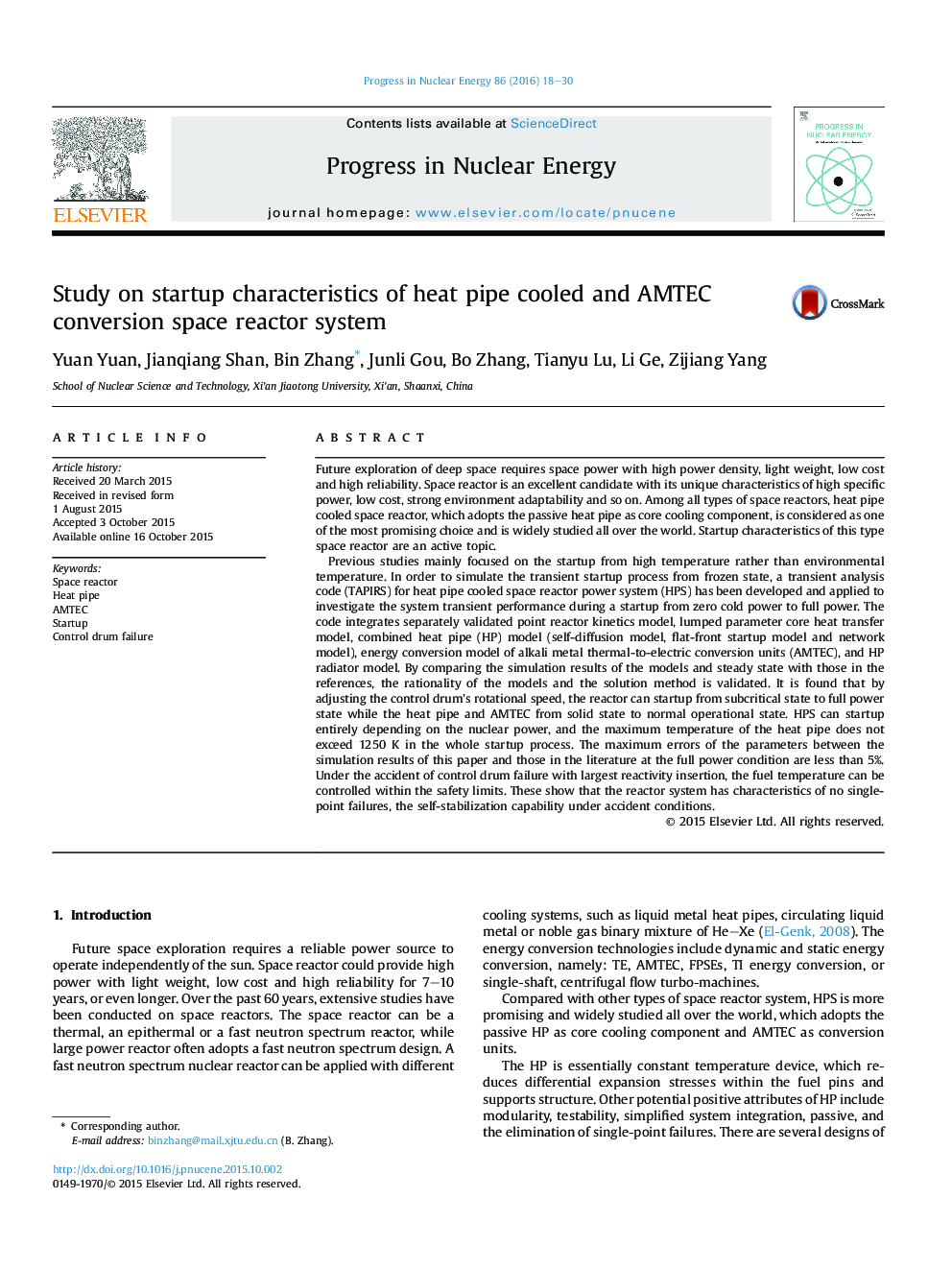| Article ID | Journal | Published Year | Pages | File Type |
|---|---|---|---|---|
| 1740314 | Progress in Nuclear Energy | 2016 | 13 Pages |
•A transient analysis code TAPIRS for HPS has been developed.•A startup procedure from frozen state to full power state was proposed and analyzed.•The accident of control drum failure during startup was investigated.
Future exploration of deep space requires space power with high power density, light weight, low cost and high reliability. Space reactor is an excellent candidate with its unique characteristics of high specific power, low cost, strong environment adaptability and so on. Among all types of space reactors, heat pipe cooled space reactor, which adopts the passive heat pipe as core cooling component, is considered as one of the most promising choice and is widely studied all over the world. Startup characteristics of this type space reactor are an active topic.Previous studies mainly focused on the startup from high temperature rather than environmental temperature. In order to simulate the transient startup process from frozen state, a transient analysis code (TAPIRS) for heat pipe cooled space reactor power system (HPS) has been developed and applied to investigate the system transient performance during a startup from zero cold power to full power. The code integrates separately validated point reactor kinetics model, lumped parameter core heat transfer model, combined heat pipe (HP) model (self-diffusion model, flat-front startup model and network model), energy conversion model of alkali metal thermal-to-electric conversion units (AMTEC), and HP radiator model. By comparing the simulation results of the models and steady state with those in the references, the rationality of the models and the solution method is validated. It is found that by adjusting the control drum's rotational speed, the reactor can startup from subcritical state to full power state while the heat pipe and AMTEC from solid state to normal operational state. HPS can startup entirely depending on the nuclear power, and the maximum temperature of the heat pipe does not exceed 1250 K in the whole startup process. The maximum errors of the parameters between the simulation results of this paper and those in the literature at the full power condition are less than 5%. Under the accident of control drum failure with largest reactivity insertion, the fuel temperature can be controlled within the safety limits. These show that the reactor system has characteristics of no single-point failures, the self-stabilization capability under accident conditions.
